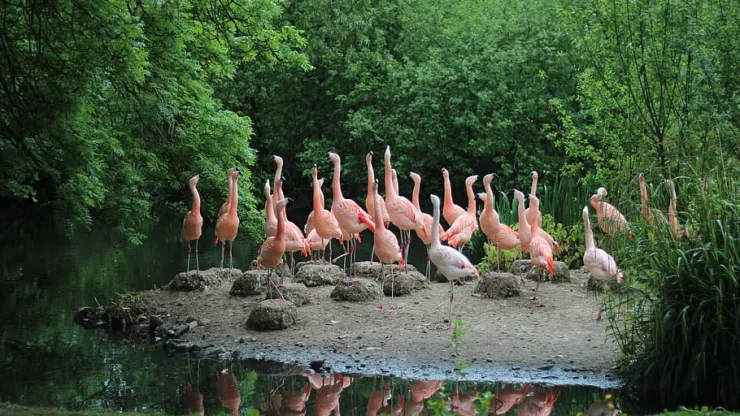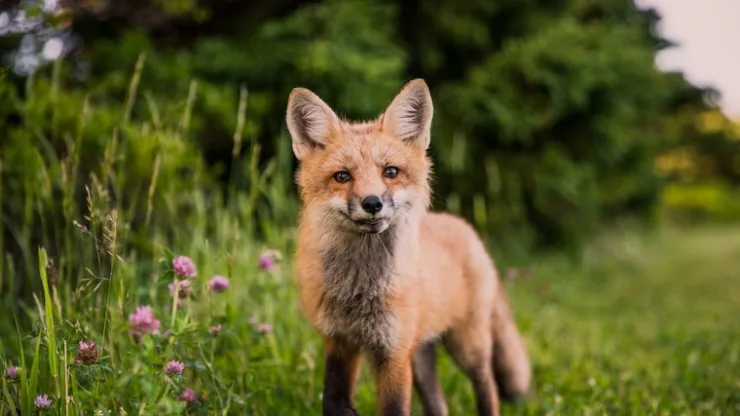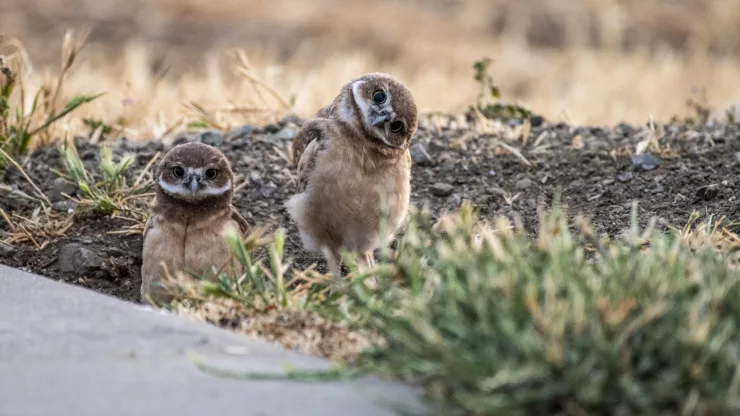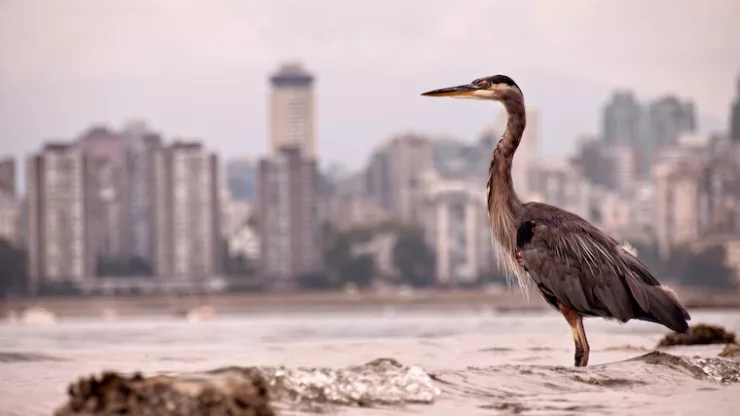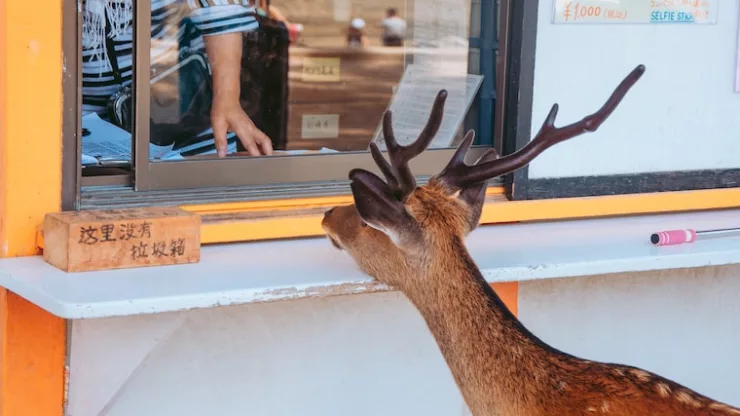Jump to Section
Introduction
Welcome to our comprehensive guide on The Urban Wildlife Gardener: Nature’s Sanctuary. In this article, we will explore the importance of creating wildlife-friendly spaces in urban environments and provide practical tips on how to design and maintain an urban wildlife garden.
Let’s dive in and discover how to transform your urban space into a thriving habitat for various species.
Creating Habitats for Urban Wildlife
Choosing the Right Plants: The first step in creating a wildlife-friendly garden is selecting plants that provide food, shelter, and nesting opportunities for various species.
Native plants are a great choice because they are adapted to the local climate and support native wildlife.
Consider including a mix of trees, shrubs, and flowering plants to create a diverse landscape.
Native Plants for Urban Wildlife Gardens
| Plant Type | Plant Name | Wildlife Benefits |
|---|---|---|
| Tree | Oak | Provides acorns for mammals and birds, supports numerous insect species |
| Shrub | Hawthorn | Offers berries for birds, shelter for insects, nesting sites for birds |
| Flower | Echinacea | Attracts pollinators such as bees and butterflies, provides seeds for birds |
| Grass | Switchgrass | Provides nesting materials and shelter for small mammals and insects |
Providing Shelter: Wildlife needs shelter to feel safe and secure. Create natural habitats by incorporating log piles, rockeries, and hedges in your garden.
These structures provide hiding places for small mammals, amphibians, and insects. Additionally, installing birdhouses and bat boxes can encourage nesting and roosting.
Creating Corridors: Connectivity is crucial for urban wildlife.
Creating corridors by linking your garden with neighboring green spaces can help animals move safely between habitats.
Planting hedgerows, shrubs, and trees along property boundaries can create natural pathways for wildlife.
Attracting Birds and Insects
Feeding Stations: Providing food sources is a surefire way to attract birds to your urban wildlife garden.
Set up feeding stations with a variety of seeds, nuts, and fruits to cater to the diverse dietary needs of different bird species.
Don’t forget to clean and refill feeders regularly to maintain hygiene and prevent the spread of diseases.
Insect Hotels: Insects play a crucial role in pollination and natural pest control. Encourage insects by building or buying insect hotels.
These structures provide shelter for beneficial insects like ladybugs, bees, and butterflies.
Place insect hotels in sunny, sheltered spots near flowering plants.
Nectar-rich Plants: Planting nectar-rich flowers is essential to attract pollinators such as bees, butterflies, and hummingbirds.
Opt for native plants that bloom throughout the year to provide a continuous supply of nectar.
Water Features and Wildlife Ponds
Water Sources: Water is a vital resource for urban wildlife.
Install birdbaths, shallow dishes, or small ponds to provide drinking and bathing opportunities for birds and other animals.
Ensure water sources are clean and replenished regularly.
Wildlife Ponds: A wildlife pond is an excellent addition to any urban wildlife garden.
Ponds attract amphibians, insects, and birds, creating a vibrant ecosystem.
When designing a pond, include shallow edges for easy access and plant aquatic vegetation to provide shelter and food.
Urban Gardening Tips for Wildlife
Avoid Chemicals: Pesticides and herbicides can harm wildlife and disrupt the natural balance of your garden.
Opt for organic gardening methods, such as companion planting and biological pest control, to maintain a healthy ecosystem.
Composting: Composting is an environmentally friendly way to recycle organic waste and create nutrient-rich soil for your garden.
A compost pile or bin also provides a habitat for insects and other decomposers, which contribute to soil health and fertility.
Mulching: Mulching is a simple technique to conserve moisture, suppress weeds, and provide habitat for insects.
Use organic materials like leaves, bark chips, or straw to cover the soil around plants, creating a natural, wildlife-friendly environment.
Leave Leaf Litter: Allow fallen leaves to accumulate in certain areas of your garden.
Leaf litter provides shelter for insects, amphibians, and small mammals while also enriching the soil as it decomposes.
The Benefits of Urban Wildlife Gardens
Biodiversity: Urban wildlife gardens contribute to biodiversity by providing habitats for various species that might struggle to survive in highly urbanized areas.
A diverse ecosystem is more resilient and better able to adapt to environmental changes.
Pest Control: By attracting beneficial insects and birds, your urban wildlife garden can help keep pests under control naturally.
This reduces the need for chemical pesticides and promotes a healthier, more balanced garden ecosystem.
Beneficial Insects for Urban Wildlife Gardens
| Insect | Role in the Garden | Attraction Methods |
|---|---|---|
| Ladybugs | Natural pest control | Plant aphid-attracting plants, provide insect hotels |
| Bees | Pollination | Plant nectar-rich flowers, provide bee hotels |
| Butterflies | Pollination | Plant host plants for caterpillars, nectar-rich flowers for adults |
| Ground beetles | Natural pest control | Provide shelter in leaf litter, log piles, and rockeries |
Pollination: Pollinators like bees and butterflies are essential for the reproduction of many plants.
An urban wildlife garden that provides nectar-rich flowers and shelter for these species contributes to the overall health and productivity of the ecosystem.
Mental Health Benefits: Engaging with nature and observing wildlife in your garden can have a positive impact on mental health.
Studies have shown that spending time in green spaces can reduce stress, improve mood, and enhance overall well-being.
Conclusion
Creating an urban wildlife garden is a rewarding endeavor that benefits both humans and wildlife.
By incorporating native plants, providing food and shelter, and implementing eco-friendly gardening practices, you can transform your urban space into a thriving sanctuary for various species.
The Urban Wildlife Gardener: Nature’s Sanctuary is not only a way to improve local biodiversity, but also an opportunity to connect with nature and contribute to the health and well-being of your community.
Frequently Asked Questions (FAQ) about Urban Wildlife Gardening
Q: What is an urban wildlife garden?
A: An urban wildlife garden is a green space in an urban environment specifically designed to attract and support various species of wildlife.
It provides food, shelter, and nesting opportunities for animals, birds, and insects while contributing to local biodiversity.
Q: Why is it important to create wildlife-friendly spaces in urban areas?
A: Urbanization often leads to habitat loss and fragmentation, making it difficult for wildlife to survive.
Creating wildlife-friendly spaces in urban areas helps support local biodiversity, improves ecosystem health, and provides essential resources for various species.
Q: How do I choose the right plants for my urban wildlife garden?
A: Focus on native plants that are adapted to your local climate and provide food, shelter, and nesting opportunities for various species.
Include a mix of trees, shrubs, and flowering plants to create a diverse landscape.
Q: How can I attract birds to my urban wildlife garden?
A: Set up feeding stations with a variety of seeds, nuts, and fruits to cater to different bird species’ dietary needs.
Provide clean water sources for drinking and bathing, and install birdhouses for nesting.
Q: What are some eco-friendly gardening practices I can adopt in my urban wildlife garden?
A: Some eco-friendly practices include avoiding chemical pesticides and herbicides, composting organic waste, mulching, and allowing leaf litter to accumulate in certain areas.
Q: How does an urban wildlife garden benefit the environment and human well-being?
A: Urban wildlife gardens contribute to biodiversity, support natural pest control, and encourage pollination.
They also offer mental health benefits by providing opportunities for people to connect with nature and enjoy the therapeutic effects of green spaces.
Q: How can I create a wildlife pond in my urban garden?
A: When designing a wildlife pond, consider the size and location of your garden.
Choose a spot with a mix of sun and shade, and avoid areas with overhanging trees.
Dig a hole with varying depths and include shallow edges for easy access. Add a mixture of aquatic plants to provide shelter and food for wildlife.
Ensure the pond has a gentle slope or provide a ramp for animals to enter and exit the water safely.
Q: Can I create an urban wildlife garden on my balcony or patio?
A: Yes, even small spaces like balconies or patios can be transformed into wildlife-friendly havens.
Use containers or window boxes to plant a variety of native flowering plants that attract pollinators.
Install a small water source, such as a shallow dish or birdbath, and provide nesting materials for birds.
Q: How do I maintain my urban wildlife garden throughout the year?
A: Regular maintenance is essential to keep your urban wildlife garden thriving. Remove dead or diseased plants, prune overgrown vegetation, and replenish water sources.
In the colder months, ensure that feeding stations and water sources are regularly cleaned and refilled.
During spring, check for nesting birds before pruning or trimming trees and shrubs.
Q: What are some common mistakes to avoid when creating an urban wildlife garden?
A: Some common mistakes include using non-native or invasive plant species, overuse of chemical pesticides and herbicides, and not providing adequate shelter, food, or water sources for wildlife.
Be mindful of these potential issues when designing and maintaining your urban wildlife garden to ensure it remains a thriving habitat for various species.
Q: Can urban wildlife gardens help mitigate climate change?
A: While urban wildlife gardens may have a relatively small impact on climate change compared to large-scale solutions, they can contribute to mitigating its effects at a local level.
By increasing green spaces, urban wildlife gardens help absorb carbon dioxide, reduce urban heat island effects, and improve air quality.
Additionally, they support biodiversity and promote healthy ecosystems, which can contribute to overall climate resilience.
I’m a nature enthusiast and creator of Metro Wilds and have spent years exploring the great outdoors.
With a passion for environmental conservation and sustainability, I have dedicated my career to writing about the beauty and wonders of nature, as well as the threats facing our planet.
Contact me at [email protected] for assistance.

